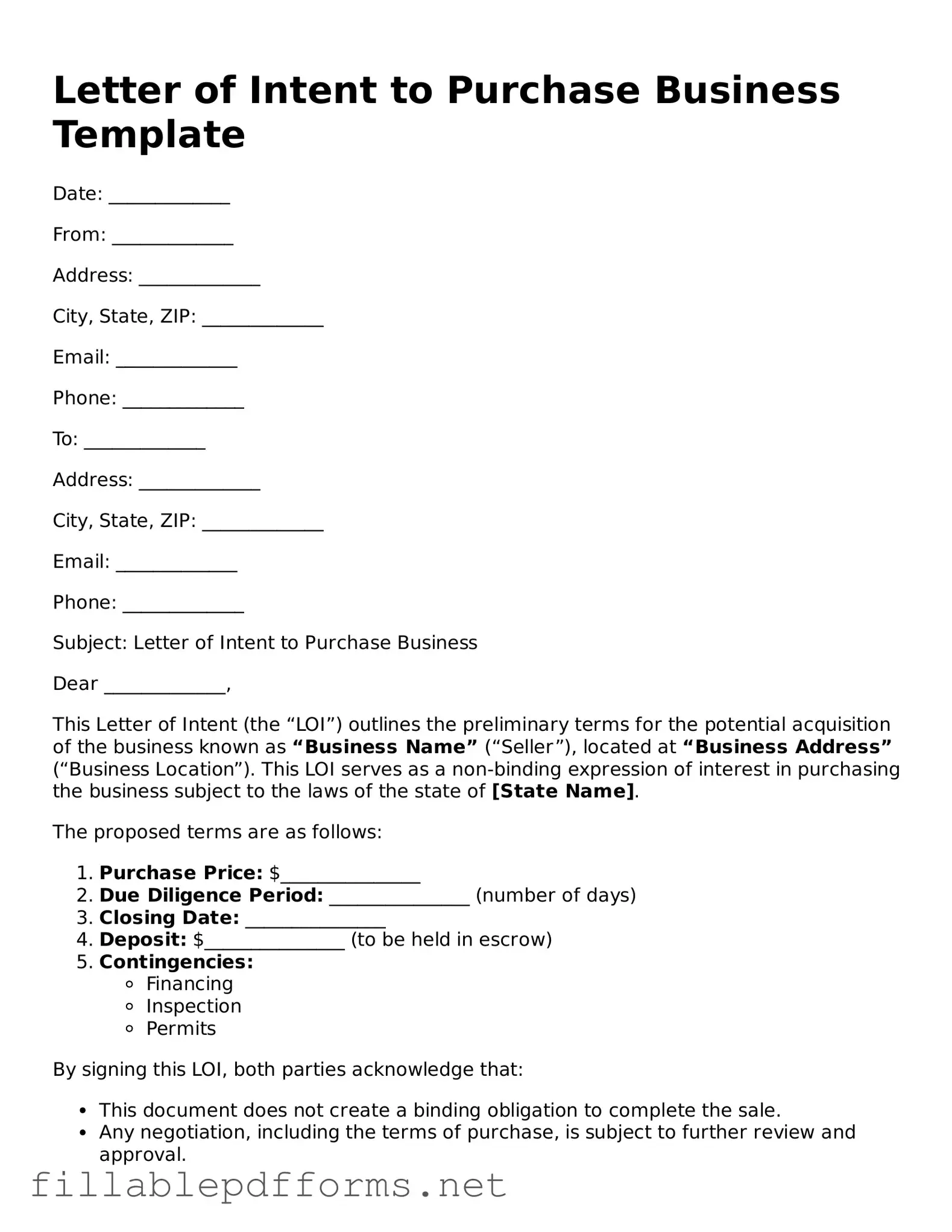Blank Letter of Intent to Purchase Business Template
The Letter of Intent to Purchase Business form serves as a preliminary agreement between a buyer and a seller, outlining the basic terms of a potential business transaction. This document establishes the intent to negotiate further and provides a framework for the purchase process. Understanding this form is crucial for both parties to ensure clarity and alignment before proceeding with a formal agreement.
Launch Editor Here
